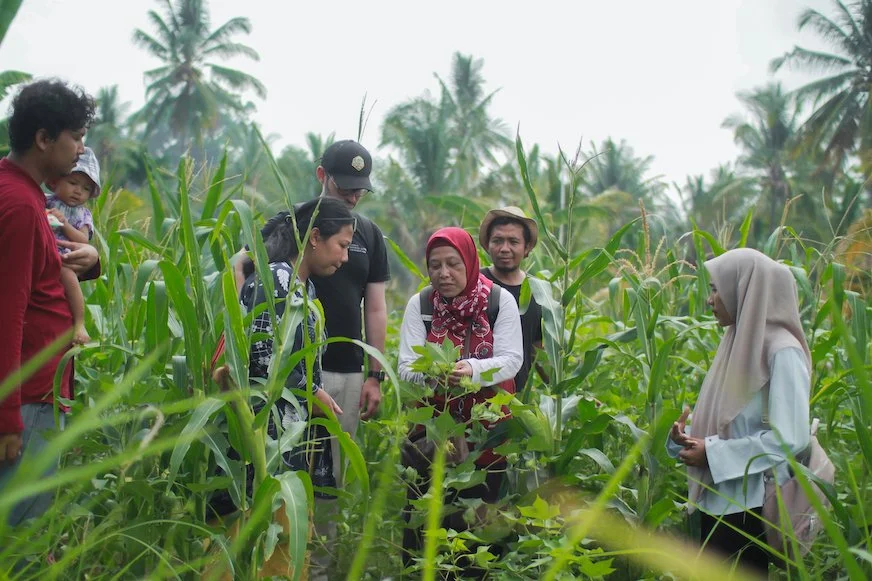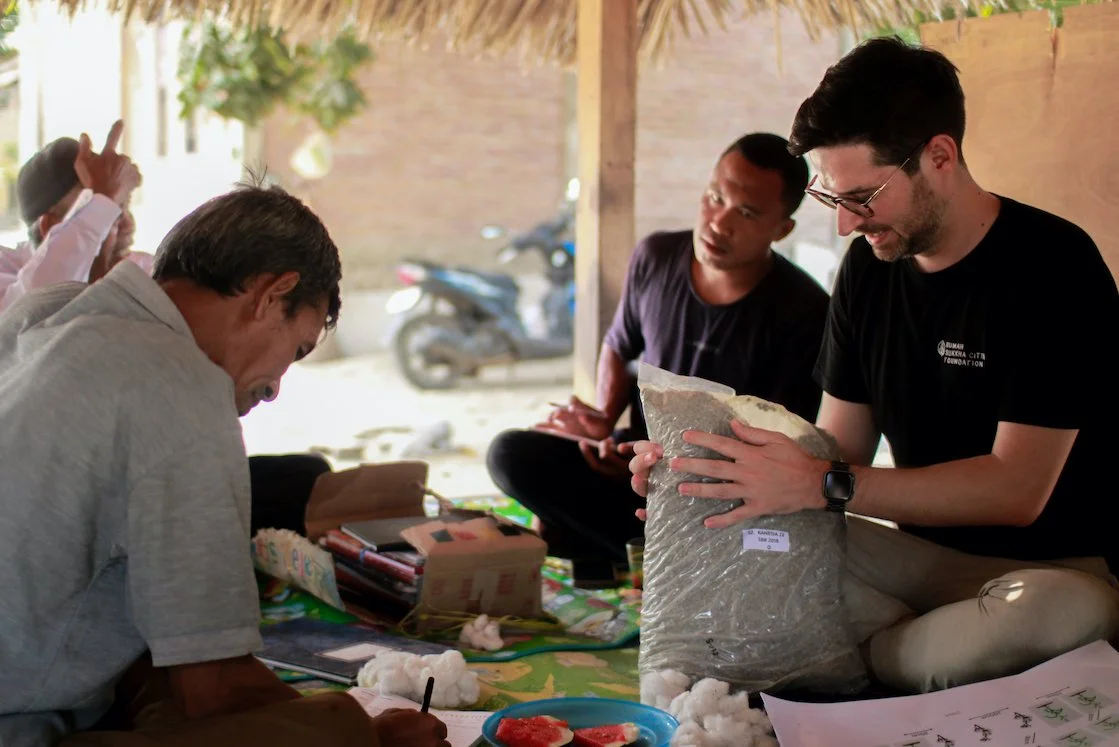Gotong Royong: Scaling Regenerative Farming in Lombok Island
For generations, farmers in Lombok have worked the same land, only to see it grow weaker with each passing season. Trapped in monoculture farming, their soil has become depleted, forcing them to rely on expensive chemicals just to keep their crops growing.
Last week, our team alongside researchers and our local partners embarked on a journey with a mission close to our hearts: to inspire a shift from monoculture chemical farming to Tumpang Sari—an indigenous, regenerative way of farming that works with nature, not against it.
More than just a technique, it’s a return to nature’s wisdom—one that nourishes both the land and the farmers who depend on it.
In the heart of Lombok’s farming communities, we met with groups of dedicated farmers who have long relied on conventional monoculture methods. These methods, though widespread, have left their lands depleted, their yields uncertain, and their costs rising due to chemical dependency. But change was in the air.
We didn’t just come to talk—we came to listen. Sitting under the shade of trees, walking through fields, and sharing meals, we heard the farmers’ concerns. They worried about risks: What if the yields are lower? What if they can’t support their families during the transition? What if the soil has become too dependent on chemicals to heal? Their fears were real, and the path ahead would not be easy.
Yet, despite these fears, hope remained. Together with researchers and local partners, we shared the story of our cotton program—how, in other regions, farmers who made the switch to regenerative practices not only revived their soil but also secured a more sustainable livelihood.
We discussed the power of Tumpang Sari, a traditional practice of planting diverse crops together, mimicking nature’s ecosystems. This method not only nourishes the soil but also improves yields and enhances biodiversity, making farms more resilient in the face of climate change.
It was very interesting to see how for most of them, they can still remember this being practiced from their childhood. What we saw in East Java is that having a connection through their core memory is what really helps with stickiness during the implementation of the program. Knowing that the same experience is available here gives us a lot of hope!
As we shared best-case practices and real stories of transformation, excitement sparked among the farmers. They saw that this was more than just a new way of farming—it was a way to reclaim their independence, protect their land for future generations, and cultivate a future where they thrive alongside nature.
By the end of our visit, something incredible happened. The farmers didn’t just listen—they committed. Right then and there, they decided to take the leap and try Tumpang Sari in this planting cycle. To support their journey, we shared native seeds, the first step in regenerating their fields.
This is how change begins. One conversation, one commitment, one seed at a time.
The road ahead will be slow and difficult, but every small step matters. Because when farmers dare to take that first step—despite the uncertainty—they plant the seeds of a new future. We are so inspired by the farmers of Lombok and can’t wait to see their fields come alive with biodiversity and abundance. Because when farmers thrive, so does the planet.
It has been a fulfilling journey to see this movement is growing, and we invite you to be part of it. Share this story, talk about it, and support the farmers who are leading the way. Because when farmers thrive, we all do. 🌎💫




